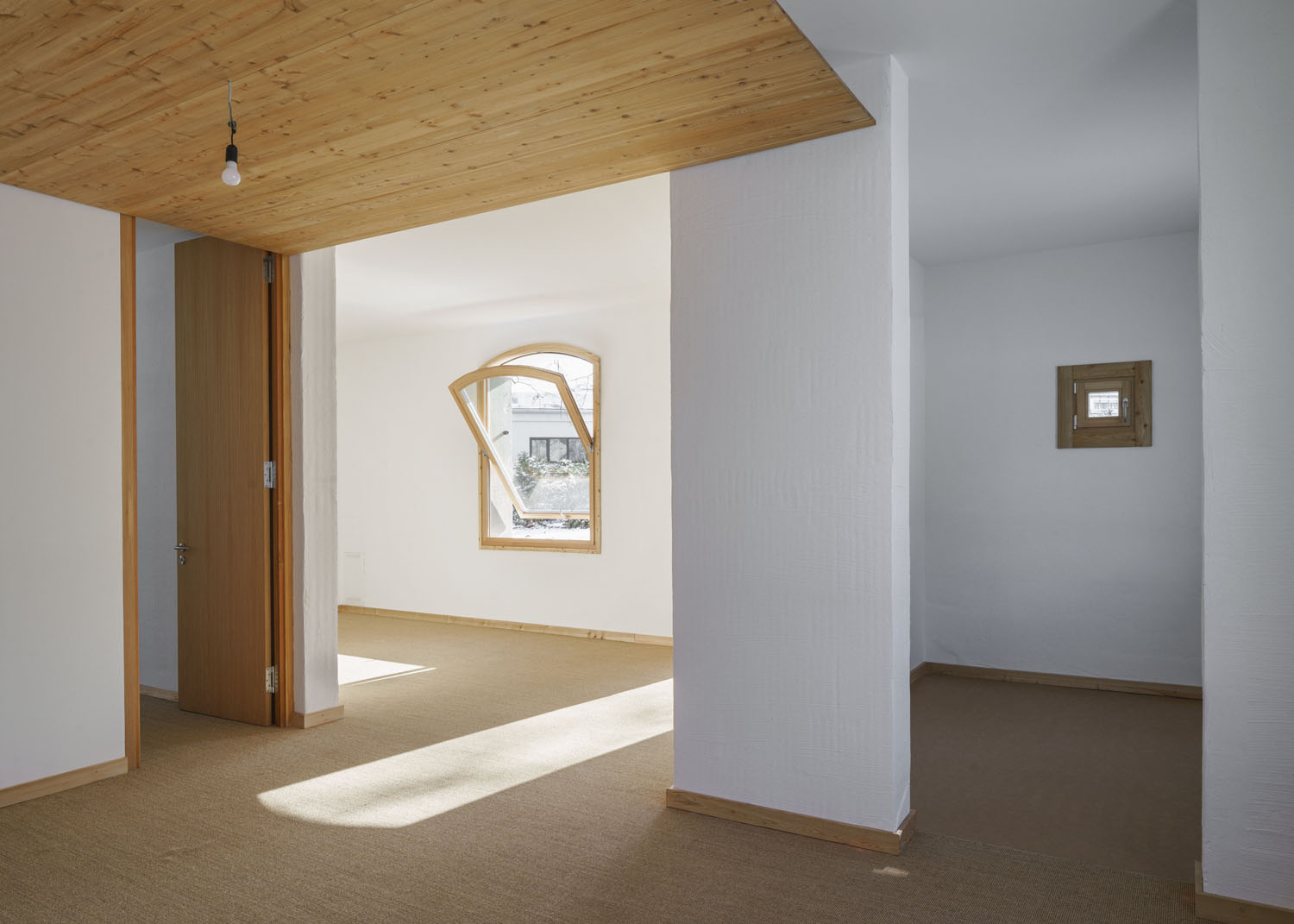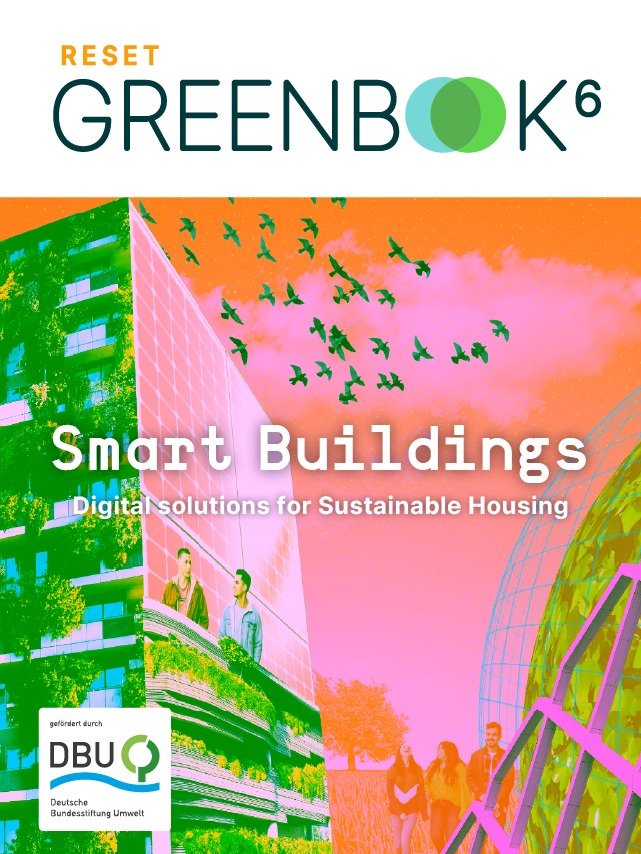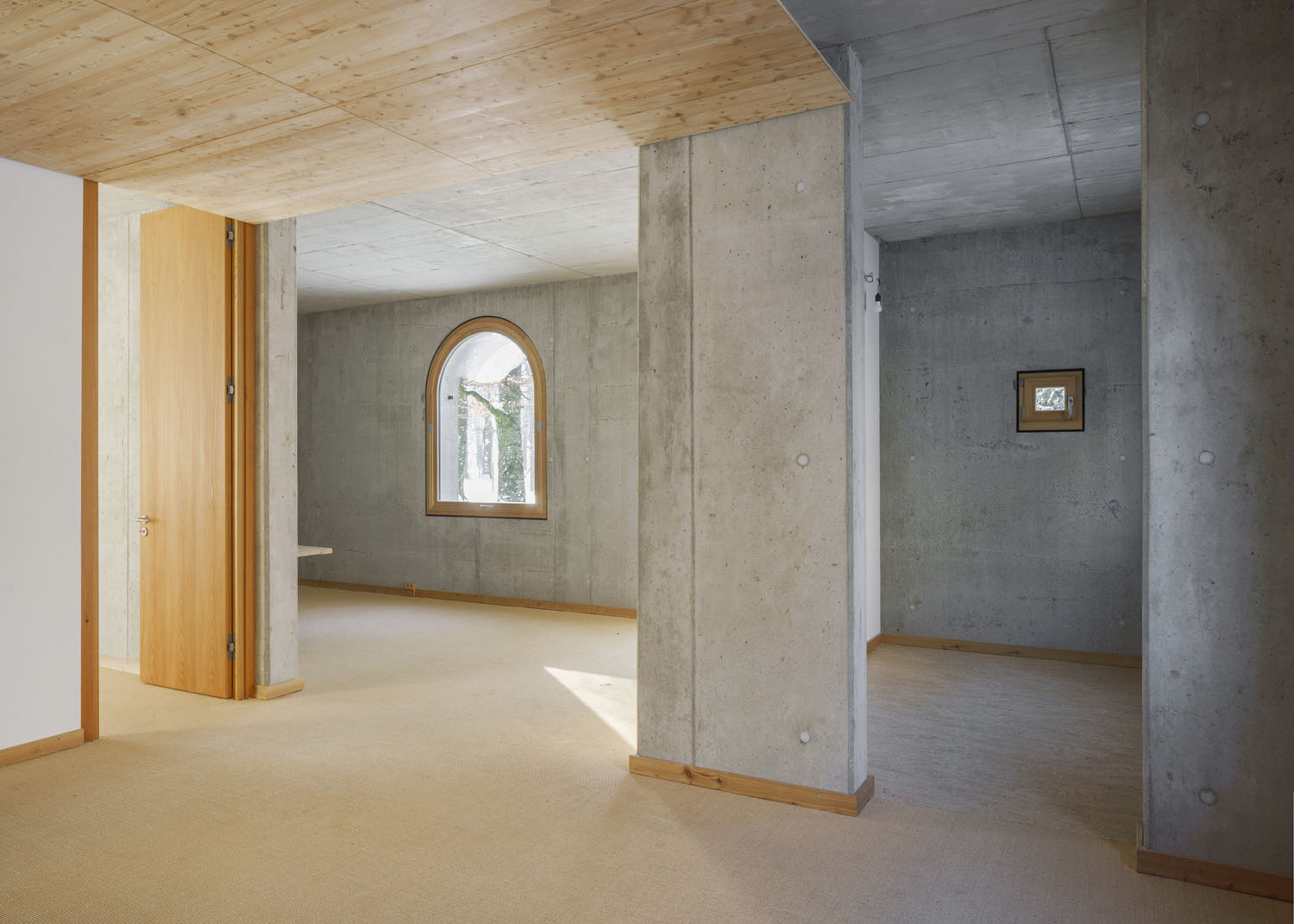“Construction is becoming more and more complicated,” says architect Tilmann Jarmer. In addition, thermal inertia or solar inputs are not used or are misjudged. “The indoor climate can get out of balance as a result. The attempt to compensate for this imbalance with technology is then sometimes more, sometimes less successful,” Jarmer adds. In order to counter these developments with a new concept, Jarmer and his team have been researching through the “Einfach Bauen” (“Build Simply”) project how to build maximally simple houses that require minimal energy and resources. The project is based at the TU Munich at the chairs of Thomas Auer and Florian Nagler.
In the meantime, research results have given rise to a model project where the simple-building principle has been consistently implemented. Since 2019, three apartment buildings with distinctive semicircular window arches have stood in Bad Aibling. At first glance, they may appear unassuming, but what’s not immediately apparent is that each of these three buildings boasts a uniquely straightforward exterior wall construction.
One of the houses is constructed from solid wood, taking an unconventional approach by omitting the typical use of vapour barriers provided by foils and additional insulation. Moreover, the individual layers are selectively glued only in essential areas to minimise the reliance on adhesives. Another house is built using vertically perforated bricks, which are notably more recyclable than the more commonly used bricks with EPS filling. Lastly, there’s a concrete house featuring insulating infra-lightweight concrete, which eliminates the need for reinforcement.
The interior of the three-storey buildings also focuses on maximum simplicity. The wall and ceiling structures consist of only one layer and are solid, thus serving as insulation and storage mass. The window areas are adapted to actual needs and the ideal indoor climate; and no auxiliary materials or special components foreign to the material were used.
The intelligence of conventional building construction
“We aim to get it right: resource-conserving, regenerative, timber construction, energy-plus. The technology for achieving this is readily available. Are there any real limitations? I’ve come across them,” criticizes architect Florian Nagler, an integral part of the project, in an interview with Bauwelt. Nagler, along with his firm Florian Nagler Architekten, was responsible for constructing the buildings in Bad Aibling for the B&O Group. He, too, calls for a fresh perspective on the methods we employ in construction. “Less reliance on technical machinery in construction, and more emphasis on technical intelligence in planning, simulation, research – along with the inspiration that emanates from Baumschlager Eberle’s ‘2226’ building.”
The Eberle architecture firm has ushered in a paradigm shift in architecture with its ‘2226’ office building. The architects have taken a bold step by completely reversing the conventional approach of achieving energy efficiency through increasingly complex building technology. Instead, they have placed their trust in the intelligence of traditional building construction methods—in other words, well-established practices within the realm of building art. Much like Jarmer and Nagler, they optimise room temperature and climate through materials, room height, and modest window placement. Additionally, they employ strategically positioned and well-constructed brickwork to attain high insulation values.
The advantages of the simple construction method are readily apparent: due to the building’s low complexity, it demands minimal effort for operation and maintenance. Moreover, such buildings exhibit greater resilience to changes and enjoy extended durability. This resilience is a direct result of complex building technologies often being susceptible to failures and rapid obsolescence, much like our smartphones or tablets. This can pose significant challenges when they cease to function and require specialised personnel for repairs, or when updates are no longer available, such as in the case of company bankruptcies. In contrast, the simple building approach aims to eliminate as many potential sources of error as possible. “As little complexity, networking, and automation as possible,” emphasizes Nagler. This approach also includes a steadfast separation of building and technical systems.
Not refusal of technology, but appropriateness
However, the reduction of highly complex technology in the house does not mean its complete exclusion. As Nagler emphasises, it must ultimately be clear, understandable, manageable and repairable for the residents.
In Eberle’s ‘2226’ office building, ventilation wings controlled by sensors regulate the temperature and CO2 levels, ensuring a pleasant climate at all times. And digital technologies have also played a central role in the “Einfach Bauen” project.
High-tech processes for low-tech solutions
After conducting thorough product and project research, the research project kicked off by fine-tuning the building structures and devising room and technical concepts. During this phase, individual rooms were meticulously planned, and their energy consumption and indoor climate were assessed, taking into account factors like depth, width, height, and window placement through simulations. Tilmann Jarmer remarked, “The ability to simulate room climates has significantly advanced recently. This enables me to explore an endless array of variations and gain insights from them.”
Additionally, the project considered compass direction and weather data as influencing factors. The result is rooms that are not only energy-efficient but also highly adaptable, which are crucial factors for the sustainability of these houses. Finally, the environmental impact and the costs over the entire life cycle were calculated for all room variants, i.e. from raw material extraction or production to disposal.
After the construction phase, a data infrastructure was set up with a network of over 300 sensors, which were then used to measure the exterior walls, indoor climate and user behaviour in long-term measurements. While many high-tech building components often show a performance gap in practice – the key figures produced by the manufacturer under laboratory conditions sometimes differ drastically from the values actually achieved – there were no major surprises in the case of the simple buildings. The figures largely confirmed the simulations. Only the energy consumption for heating and hot water was slightly less than expected, Jarmer reports.
Buildings are a CO2 heavyweight: the construction, heating, cooling and disposal of our homes accounts for around 40 percent of Germany’s CO2 emissions. We will only achieve our climate goals if these emissions are massively reduced.
But how can we achieve the sustainable transformation of buildings and what role do digital solutions play in this? The RESET Greenbook provides answers: Building transformation – intelligently transforming houses and neighbourhoods.
However, it has also been shown that the occupants’ behaviour has a great influence on the energy demand. Wouldn’t this, in turn, speak in favour of using Nonetheless, it has been demonstrated that occupants’ behaviour significantly influences energy consumption. Wouldn’t this, in turn, argue in favor of greater automation to prevent “undesirable” behaviour that leads to increased energy use? “Let’s imagine that room temperature, humidity, and brightness in my space are automatically controlled. Suppose I’ve precisely defined the necessary parameters for automation, perhaps through an app. Now, automation requires access to sensors to detect my presence. It also needs to control various elements like blinds, lighting, ventilation, and heating. These processes need to function flawlessly and be managed by me. Sometimes I may want more light, other times less. ‘No, please, don’t raise the blinds!’ Automation is indeed a complex task,” Jarmer explains. Therefore, it appears sensible to invest efforts in educating users while simultaneously employing technical systems that remain sufficiently robust to achieve desired outcomes even when users’ behaviour deviates.
Innovation through reduction
The ” Einfach Bauen” project is a good example of how more sustainability can be achieved through less complexity. With their approach, the research houses won the German Sustainability Award for Architecture 2022.
The project will not stop here. “Our team will start the research project ‘enfach (um)bauen’ (‘simply (re)build’) in October. There we want to investigate whether it could make financial and ecological sense to focus building activity less on full renovations and more on robust partial renovations,” Jarmer reports. In addition, three houses for student housing are to be built on the campus of the TU Munich in Garching, also according to the simple-building principle.
Tilmann Jarmer is optimistic that buildings streamlined to their core elements will become more than just a passing trend, placing a strong emphasis on the initiative of developers. “Maybe there will also be incentives from the political sphere. Introducing a building type E, which encourages exploring alternatives to the standards dictated by building regulations, would be a great way to experiment more swiftly.”












